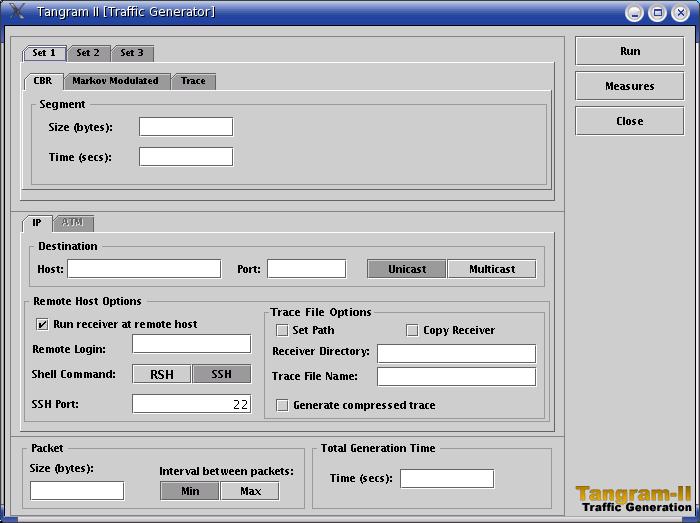![]()

One of the main goals of teletraffic engineering is to be able to predict, with sufficient accuracy, the impact of the traffic generated by the applications on the network resources, and evaluate if the required QoS is being achieved. With the increasing demand for multimedia applications, to know the internal network characteristics became essential for improving the quality of these applications. Loss, consecutive loss, round-trip-time(RTT), one-way delay(OWD), jitter, bottleneck bandwidth, bottleneck buffer size, drop rate, among others, are some of those network characteristics commonly measured. To discover these parameters, methods have been proposed.
The Tangram-II Traffic Generator is a powerful tool for discovering network characteristics. In the first version, the tool was able to estimate only some basic parameters (Jitter, Loss, and Consecutive Loss). However, the current version is able to estimate many others. Beside the parameters mentioned before, the Tangram-II Traffic Generator has implemented methods to estimate bottleneck bandwidth, one-way delay, bottleneck buffer size, drop rate, and other network measures. To estimate some of these metrics, state-of-the-art algorithms was implemented inside Tangram-II Traffic Generator source, as for example the methods to estimate the delay in one-way without any synchronization devices.
The Traffic Generator developed is capable of injecting packets in the network at intervals in accordance to the user specifications. It supports UDP/IP and native ATM through the ATM adaptation layer (AAL5). When UDP/IP is chosen the tool employs the BSD socket standard. Traffic for native ATM is supported using the API developed by Werner Almesberger for Linux. However, to make available the ATM generation interface, the tool employs a check to verify some dependences. The traffic generator interface is shown in the figure bellow.
More information about Tangram-II Traffic Generator is available in on-line manual
